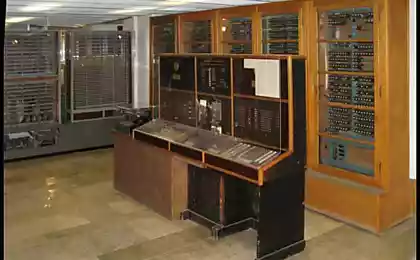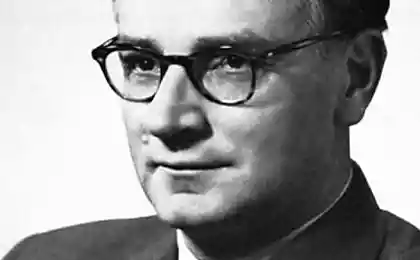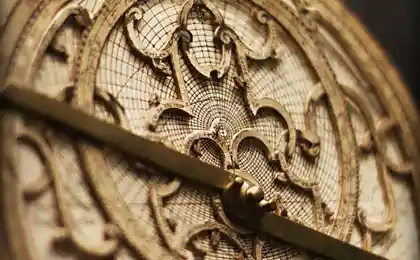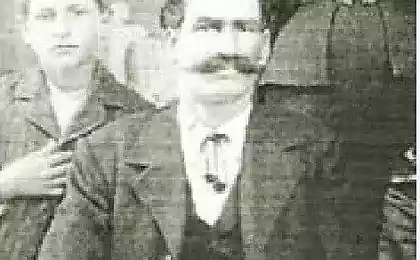701
Astrolabe — the most ancient computer
This ancient instrument, created more than two millennia ago, when people believed that the Earth was the center of the Universe. The astrolabe is sometimes called the first computer. Undoubtedly, this device is with the deepest mystery and beauty
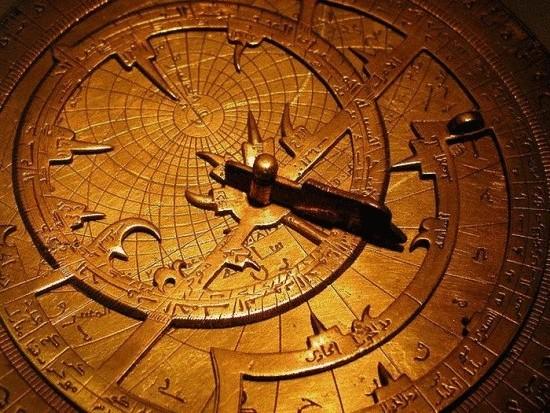
The astrolabe first appeared in Ancient Greece. Vitruvius in his Scripture "the Ten books on architecture", talking about astronomical instrument called "spider" said that he "invented by the astronomer Eudoxus, and others say — Apollonius". One of the main parts of this instrument was the drum, where it painted the sky with the zodiac circle.
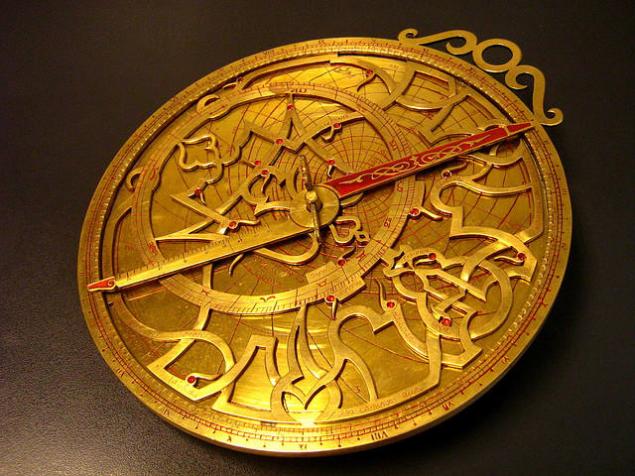
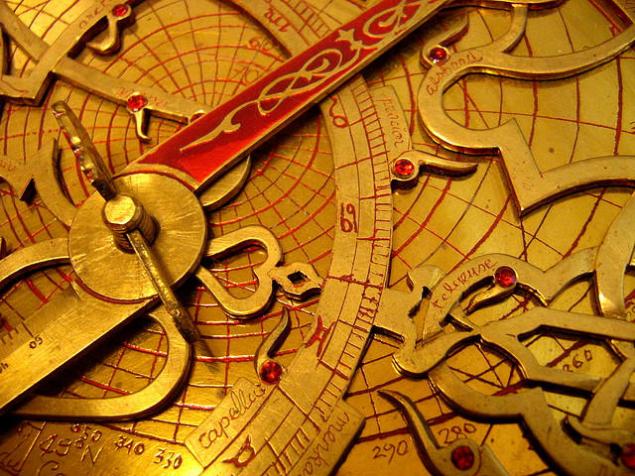
Stereographic projection described in the II century ad by Ptolemy in his "Planisphere". However, "astrolabium" he was called the Ptolemy instrument armillary sphere. The final form of the astrolabe was developed in the fourth century ad, in Alexandria, almost three hundred years after Ptolemy, the mathematician and philosopher Hypatia was condemned by the Christian society in satanic rituals, including, among other things, the use of the astrolabe. She was beaten, raped and executed in 415 BC Her student, Theon of Alexandria, left behind a copy of the notes on the use of the astrolabe.
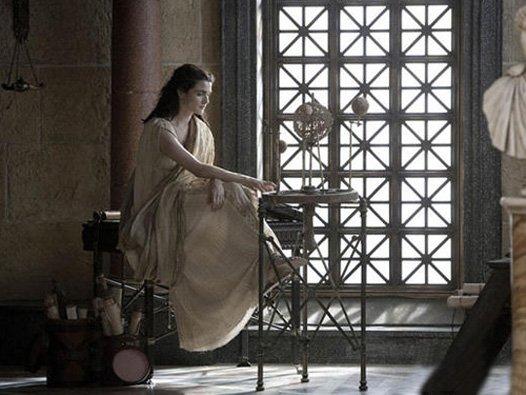
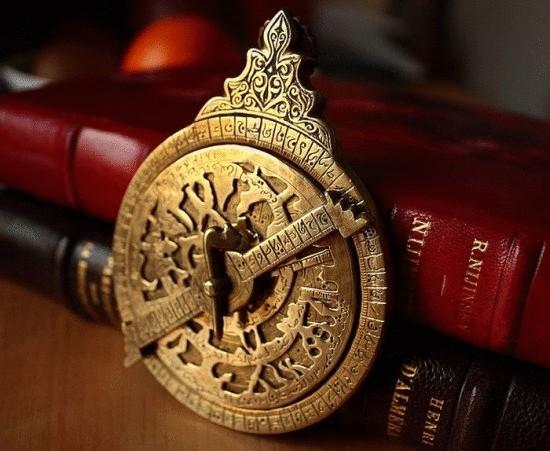
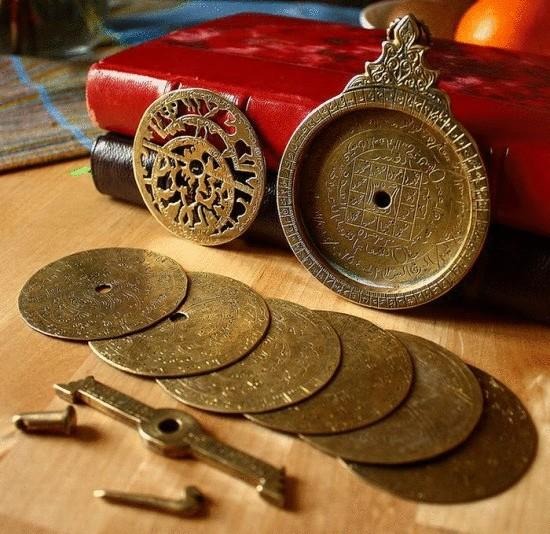
After the death of Hypatia Europe "lost" the astrolabe after the fall of the Roman Empire. Most of the ancient Greek knowledge was lost in Western Europe, the population of which belonged to the ancient Greek (and thus atheistic) technology with great suspicion. However, it is carefully guarded by the followers of Islam, the use of the astrolabe by them is confirmed by many facts. Without Spain and its Islamic religion, the Renaissance would never have occurred. Most ancient Greek texts were translated into Arabic. They were later translated into Latin, and then the astrolabe was again presented, the vast majority of Europeans.

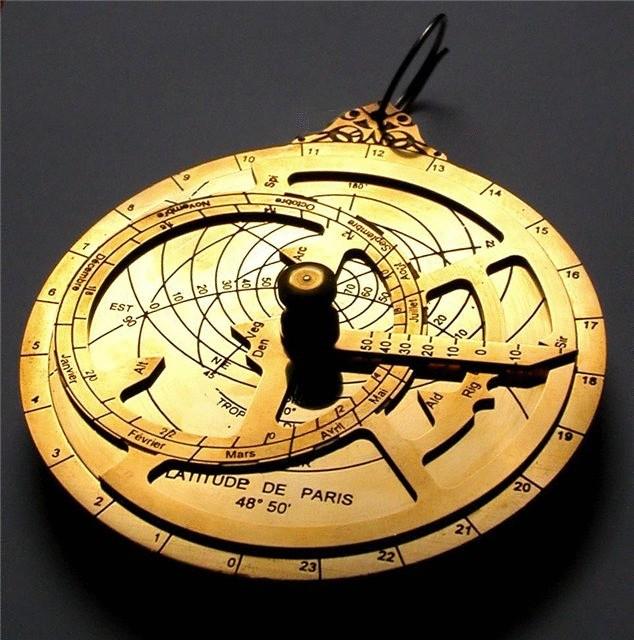
Scientists of the Islamic East has improved the astrolabe and began to apply it not only to determine the time and duration of day and night, but also to carry out some mathematical calculations and for astrological predictions. There are many works of medieval Islamic authors of various designs and the use of the astrolabe.
These are the books of al-Khwarizmi, al-Astrolabe, AZ-Zarqali, AC-Sigidi, al-Farghani, al-Sufi, al-Biruni, Nasir al-DIN al-Tusi and others.
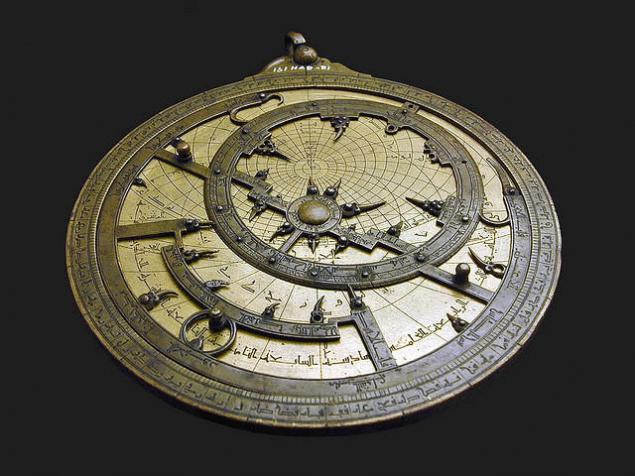
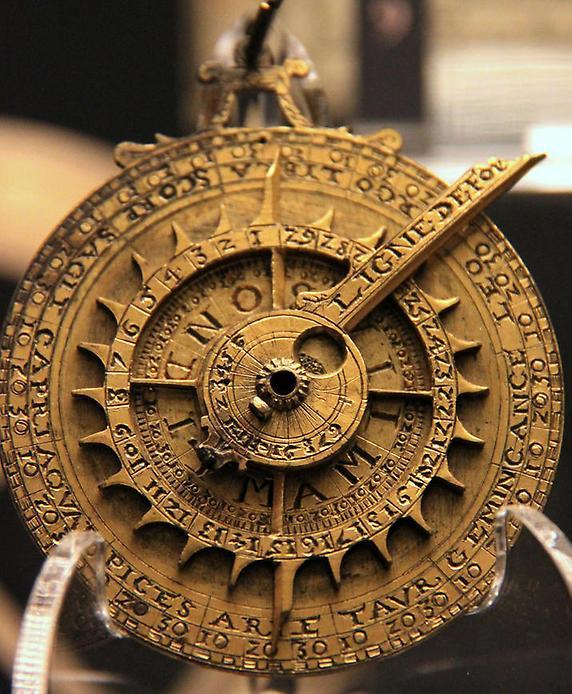
From the XII century astrolabe become famous in Western Europe, where first used Arabic instruments, and later began manufacturing their Arab samples. In the XVI century they were doing on the basis of its own calculations, to apply to the European latitudes.
The peak of its popularity in Europe, the astrolabe reached in the Renaissance, during the XV—XVI centuries, she along with the armillary sphere was one of the main tools of astronomical education.

Knowledge of astronomy was considered the basis of education, and the ability to use the astrolabe was a matter of prestige and a sign of appropriate education. European masters, like their predecessors, the Arabs paid great attention to decoration, so that the astrolabe became the subject of fashion and collecting in the Royal courts.
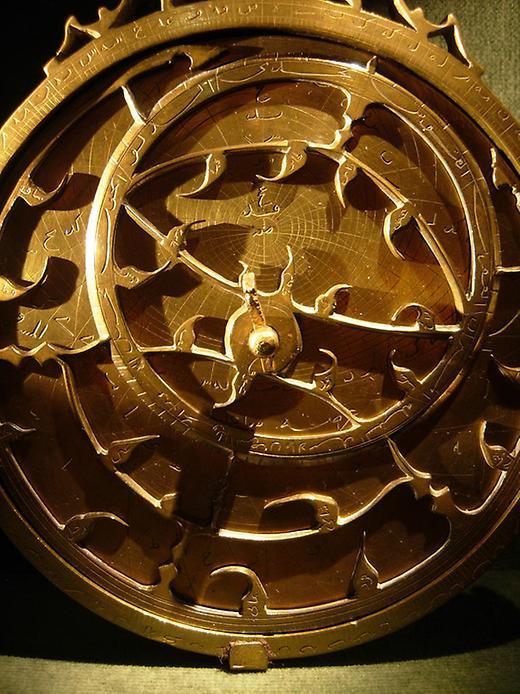
Accurately describe the working process of the astrolabe would have been pointless – it's best if you see it with your own eyes.
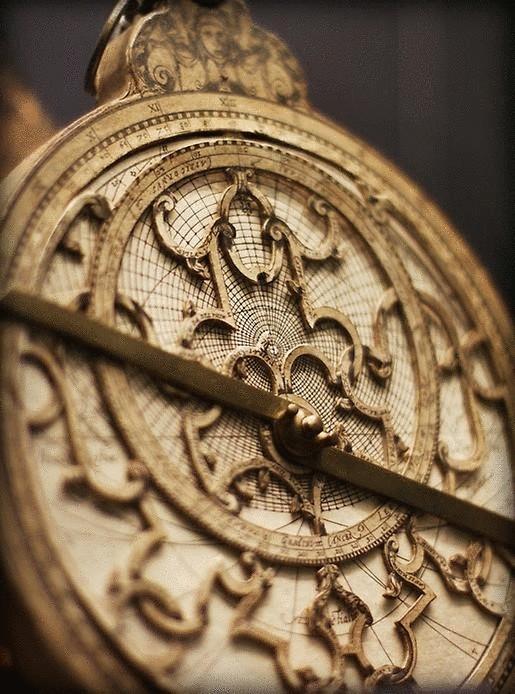
Cleopatra the astrolabe.
As he wrote al-Biruni, the device of this astrolabe invented by al-Sigidi, is "the belief of some people that the orderly movement of the Universe belongs to the Earth and not the celestial sphere". On its tympanum represented the Ecliptic and the stars, and on the movable part of the horizon and almucantars.
Photo Arab astrolabe 1090г, from the collection of the National Museum of American
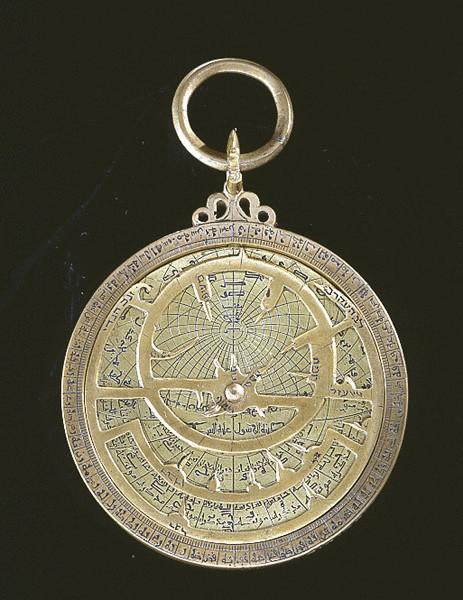
Perfect the astrolabe. In this astrolabe invented by al-Saghani, the design center is not the North pole of the world, and an arbitrary point in the celestial sphere. In this case, the principal circles of the sphere are depicted on the tympanum is not the circles and straight lines, but circles and conic sections.
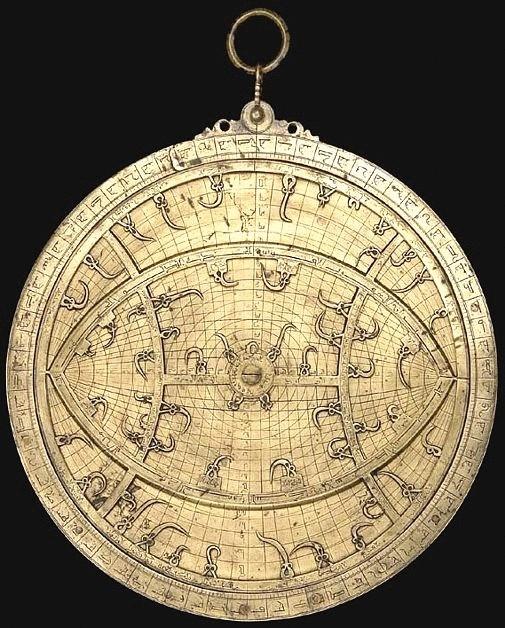
The universal astrolabe. In this astrolabe invented by al-Zarqali, at the centre of the design is taken from one of the equinoxes. In this case the celestial equator and the Ecliptic are represented on the tympanum of straight lines. The tympanum of the astrolabe, in contrast to the conventional astrolabe tympanum, suitable for any latitude. The functions of the normal spider of the astrolabe here performs line rotating around the center of the tympanum, and called "rolling horizon".
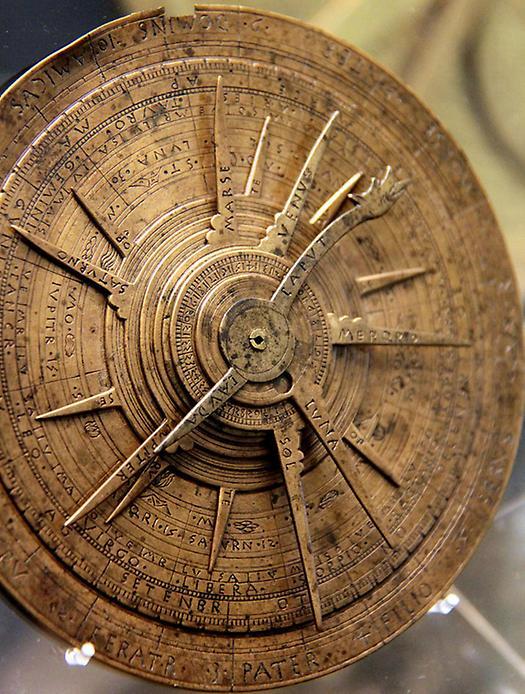
The spherical astrolabe. The celestial sphere presented in this astrolabe in the form of a sphere, and its spider also has a spherical shape.
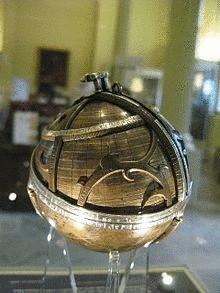

Supervisory astrolabe. This astrolabe is a combination of the armillary sphere and the astrolabe usual, embedded in the ring representing the Meridian.
The linear astrolabe. The astrolabe, invented by Sharaf al-DIN al-Tusi, represents a core with multiple scales attached to a sighting threads.
The sea astrolabe. This device, invented by Portuguese craftsmen in the early fifteenth century, is a purely observational device and is not intended for the product of analog computing.
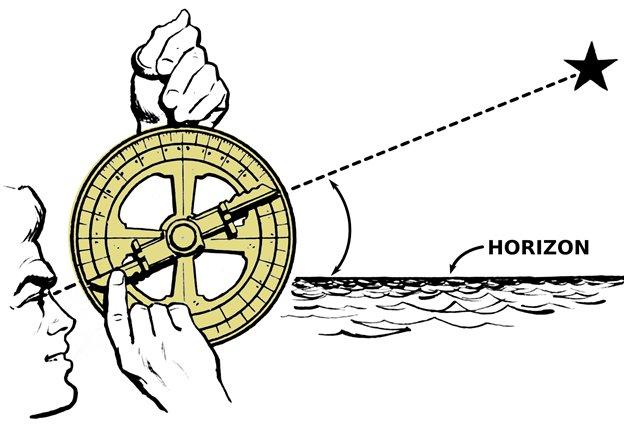
the sea astrolabe.
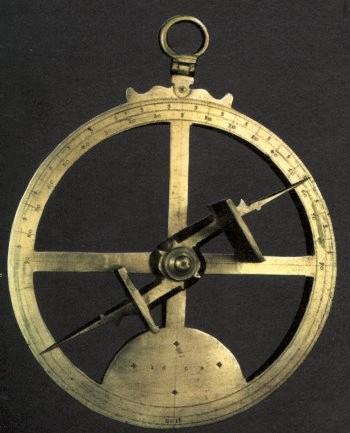
The photo of an Astrolabe quadrant, 1325
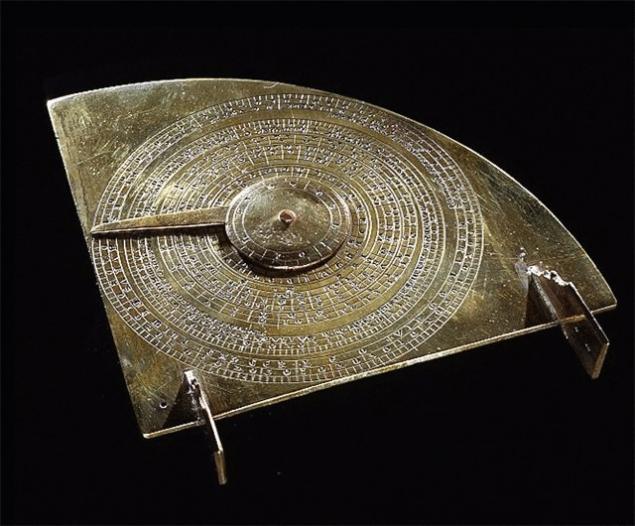
In modern encyclopedias says that this device is designed for determining the latitude. In fact, the functions of the astrolabe is much more diverse: it can rightfully be called a computer of a medieval astrologer. The precise number of functions of the astrolabe is not likely to be able to name one, as different types of astrolabes could perform different types of work. Even in the tenth century Arab scholar al-Sufi wrote a detailed treatise, consisting of 386 chapters in which he listed the 1000 uses for the astrolabe. He may have exaggerated a little, but not much. After using this unique tool was possible:

to convert Ecliptic coordinates of the stars or the Sun in the horizontal (i.e. to determine their altitudes and azimuths);
using observations of stars and Sun through a special viewfinder to determine the latitude directions at different cities (mostly to calculate the direction to Mecca), to determine the time of day
to determine sidereal time; to determine the time of sunrise and sunset luminaries, i.e. the beginning and end of the day and also the moments of rising of the stars, and if there were ephemerides, planets and to determine the rising and setting degrees of the Ecliptic, i.e. the ascendant and descendant, to build houses of the horoscope;
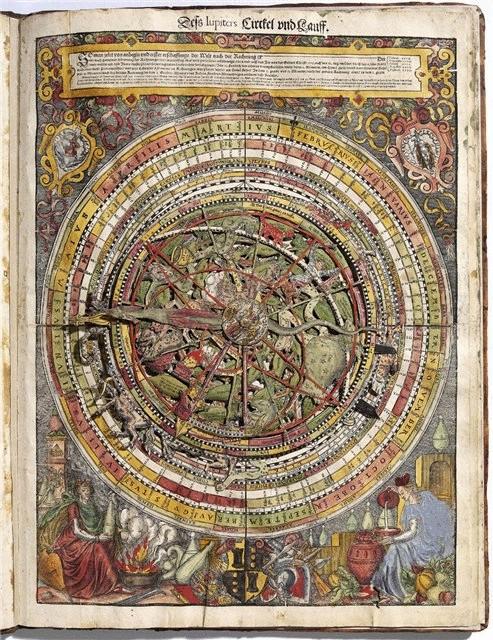
to determine the latitude of the location by measuring the Sun's height at noon or heights of the stars in the climax (not sure if this was done often, since the use of the astrolabe for this purpose reminds shooting from a gun on sparrows);
to solve purely earthly tasks, like measuring the depth of pit or height of the terrestrial object; and calculate the trigonometric functions (sine, cosine, tangent, cotangent).
to do conversions between three coordinate systems — Equatorial (right ascension and declination), Ecliptic (longitude, latitude) and horizontal (azimuth, altitude), and much more...
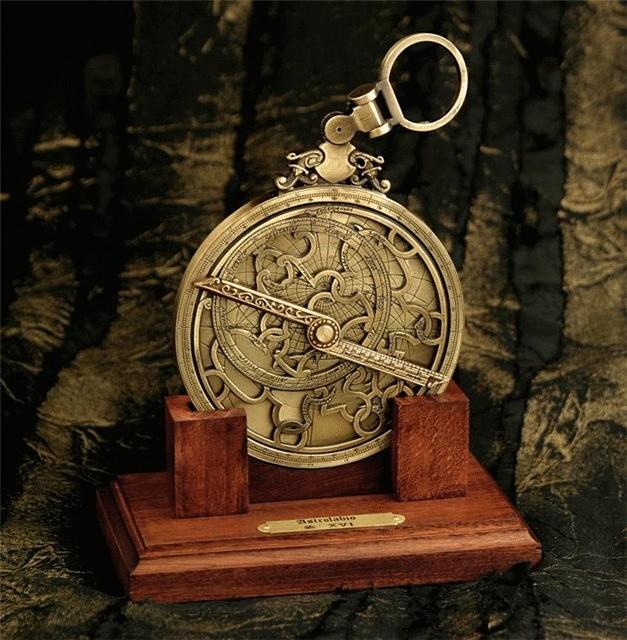
That's how they were arranged traditional Panisperna astrolabe, usually manufactured from brass.
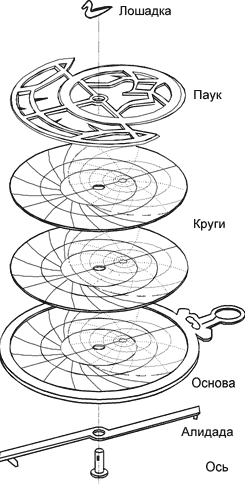
The housing often has a thickness of about 6 mm and a diameter of 15 – 20 cm (at the largest astrolabes up to 50 cm). Although often found and more solid tools 30-40 cm in diameter, the giant known instance of 85 cm, and Vice versa, miniature pocket version is only 8 cm in diameter. The fact that the size of the astrolabe directly dependent, and its accuracy.
The photo is an example of how to build a simple astrolabe.
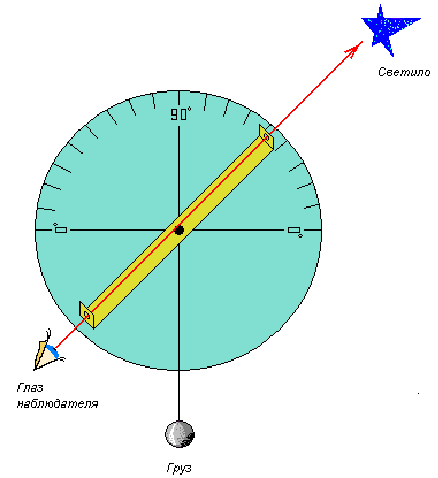

IN the photo the Astrolabe work Mahmud ibn Shawka al-Baghdadi 1294-1295 diameter — 96 mm. From the collection of the National Maritime Museum, London
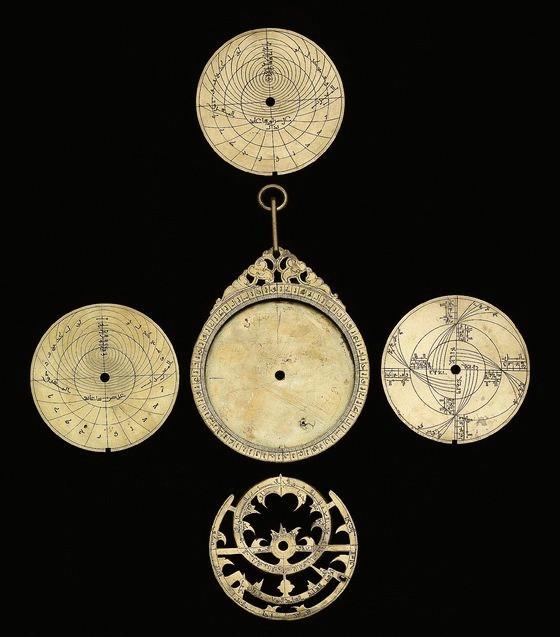
During the heyday of the Arab world during the day was measured using hours of sunshine, and at night with water or sand. The astrolabe allows the reconciliation of these hours. It required a day to observe the height of the Sun, and at night — one of the brightest stars are plotted on the spider of the astrolabe. Interesting device on the basis of the same astrolabe, which can be called a prototype of a mechanical watch, was designed by the famous Arabic scholar al-Biruni. He proposed a scheme of the astrolabe, which automatically showed the relative positions of the Sun and the moon, i.e. lunar phase. The instrument had a double hull, inside of which was fixed gear. If you rotate at a certain speed, the external drive in the window it was possible to observe the changing of the moon phases. Later came the astrolabe, equipped with gears, which simulated the movement of planetary spheres. However, at that time there was no reliable mechanical drive, so the device was fully implemented only in medieval Europe, when it was invented kettlebell and spring drives. A first mechanical clocks, often mounted on towers of cathedrals in Europe, for a long time was done in the form of astrolabes.
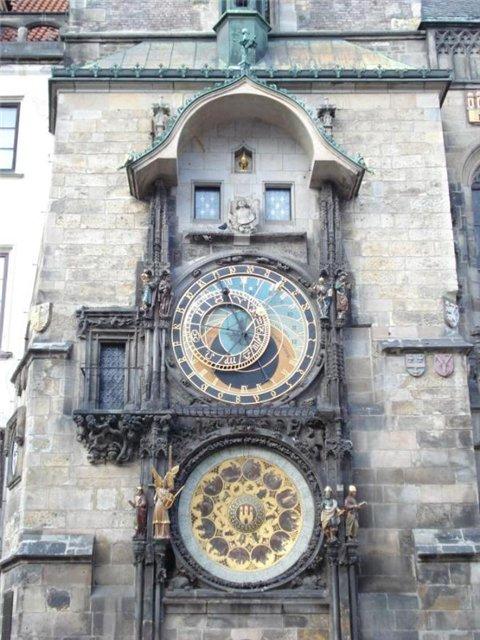
And it's no wonder complex Arabic astrolabe turned into real works of art. Pointers the stars looked not just pins and spirals and swirls in the shape of leaves. The circumference of the tool instructionals precious stones and sometimes off with gold and silver. And all because often with the astrolabe at the menacing sight of any vizier or Shah acted as a court astrologer. Great tool added weight to the predictions of an astrologer, and from this depended not only the fate of the seer but also the development of astronomy, then simply often called the science of the stars.
The photo Persian astrolabe 1223г
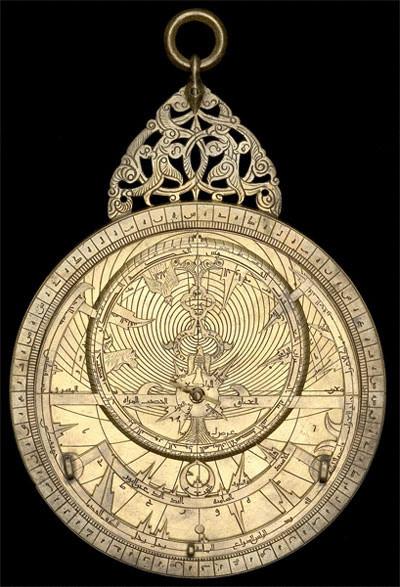
Legend was an incident allegedly occurred with Biruni. One day a treacherous ruler decided to settle accounts with undesirable scientists and demanded an answer to the question: "which door is North or South it will come from the audience?" Performing a series of manipulations with the astrolabe, resourceful Biruni replied that he would cut a new door. The answer was correct. But most of the rulers were generous to his court astrologers allocating money for the construction of observatories, the creation of various sIgA tables ephemeris. All this led though to a small, but the progress of astronomy.
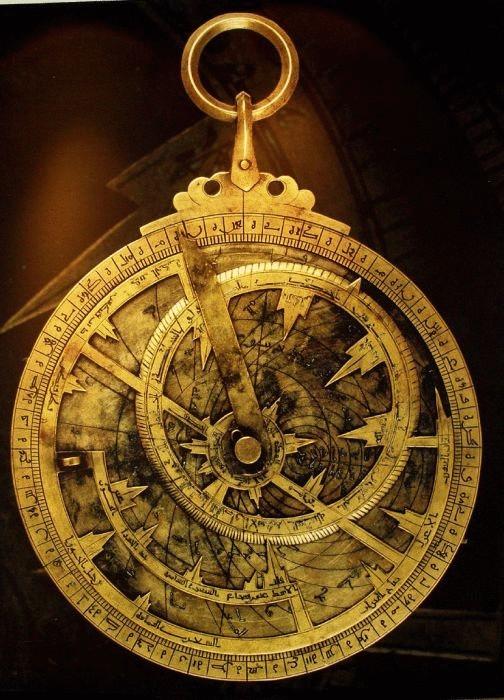
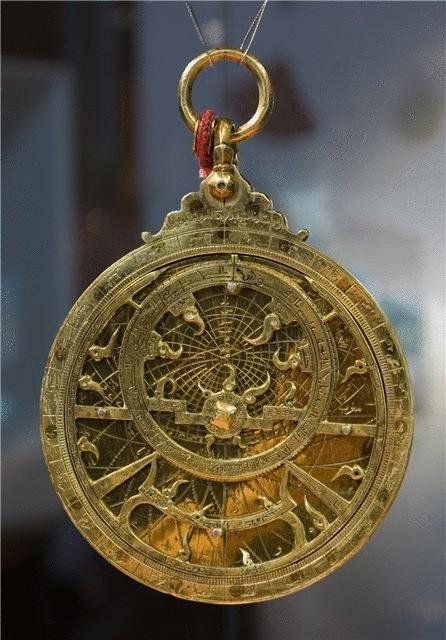
In the photo, the French astrolabe from the late 16th — early 17th centuries.
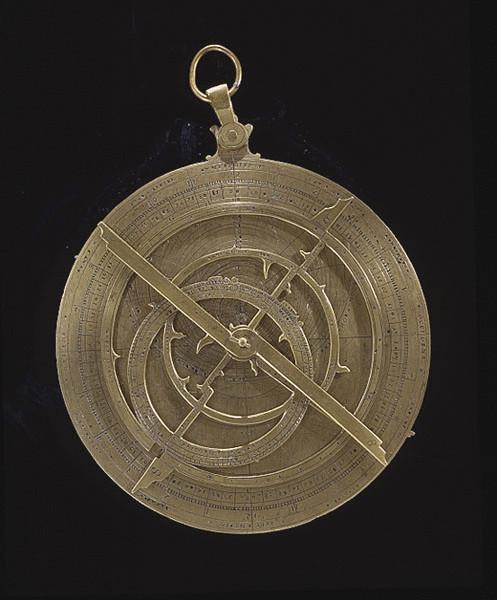
The modern descendant of the astrolabe planisphere is the — mobile sky map, used for training purposes.
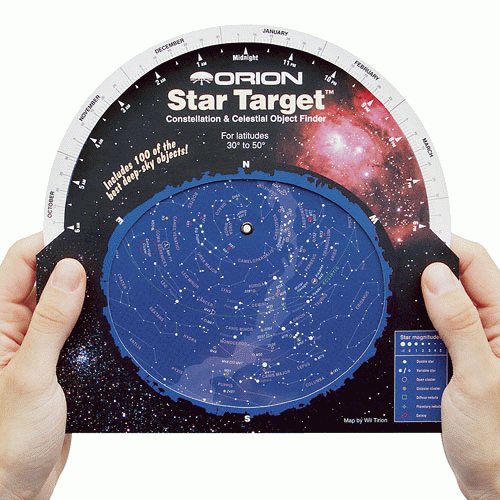
That's such a long way through the centuries have done this astronomical instrument without losing its magical charm and in our age of the computer and powerful telescopes.

published
P. S. And remember, just changing your mind — together we change the world! ©
Source: p-i-f.livejournal.com/2786673.html

The astrolabe first appeared in Ancient Greece. Vitruvius in his Scripture "the Ten books on architecture", talking about astronomical instrument called "spider" said that he "invented by the astronomer Eudoxus, and others say — Apollonius". One of the main parts of this instrument was the drum, where it painted the sky with the zodiac circle.


Stereographic projection described in the II century ad by Ptolemy in his "Planisphere". However, "astrolabium" he was called the Ptolemy instrument armillary sphere. The final form of the astrolabe was developed in the fourth century ad, in Alexandria, almost three hundred years after Ptolemy, the mathematician and philosopher Hypatia was condemned by the Christian society in satanic rituals, including, among other things, the use of the astrolabe. She was beaten, raped and executed in 415 BC Her student, Theon of Alexandria, left behind a copy of the notes on the use of the astrolabe.



After the death of Hypatia Europe "lost" the astrolabe after the fall of the Roman Empire. Most of the ancient Greek knowledge was lost in Western Europe, the population of which belonged to the ancient Greek (and thus atheistic) technology with great suspicion. However, it is carefully guarded by the followers of Islam, the use of the astrolabe by them is confirmed by many facts. Without Spain and its Islamic religion, the Renaissance would never have occurred. Most ancient Greek texts were translated into Arabic. They were later translated into Latin, and then the astrolabe was again presented, the vast majority of Europeans.


Scientists of the Islamic East has improved the astrolabe and began to apply it not only to determine the time and duration of day and night, but also to carry out some mathematical calculations and for astrological predictions. There are many works of medieval Islamic authors of various designs and the use of the astrolabe.
These are the books of al-Khwarizmi, al-Astrolabe, AZ-Zarqali, AC-Sigidi, al-Farghani, al-Sufi, al-Biruni, Nasir al-DIN al-Tusi and others.


From the XII century astrolabe become famous in Western Europe, where first used Arabic instruments, and later began manufacturing their Arab samples. In the XVI century they were doing on the basis of its own calculations, to apply to the European latitudes.
The peak of its popularity in Europe, the astrolabe reached in the Renaissance, during the XV—XVI centuries, she along with the armillary sphere was one of the main tools of astronomical education.

Knowledge of astronomy was considered the basis of education, and the ability to use the astrolabe was a matter of prestige and a sign of appropriate education. European masters, like their predecessors, the Arabs paid great attention to decoration, so that the astrolabe became the subject of fashion and collecting in the Royal courts.

Accurately describe the working process of the astrolabe would have been pointless – it's best if you see it with your own eyes.

Cleopatra the astrolabe.
As he wrote al-Biruni, the device of this astrolabe invented by al-Sigidi, is "the belief of some people that the orderly movement of the Universe belongs to the Earth and not the celestial sphere". On its tympanum represented the Ecliptic and the stars, and on the movable part of the horizon and almucantars.
Photo Arab astrolabe 1090г, from the collection of the National Museum of American

Perfect the astrolabe. In this astrolabe invented by al-Saghani, the design center is not the North pole of the world, and an arbitrary point in the celestial sphere. In this case, the principal circles of the sphere are depicted on the tympanum is not the circles and straight lines, but circles and conic sections.

The universal astrolabe. In this astrolabe invented by al-Zarqali, at the centre of the design is taken from one of the equinoxes. In this case the celestial equator and the Ecliptic are represented on the tympanum of straight lines. The tympanum of the astrolabe, in contrast to the conventional astrolabe tympanum, suitable for any latitude. The functions of the normal spider of the astrolabe here performs line rotating around the center of the tympanum, and called "rolling horizon".

The spherical astrolabe. The celestial sphere presented in this astrolabe in the form of a sphere, and its spider also has a spherical shape.


Supervisory astrolabe. This astrolabe is a combination of the armillary sphere and the astrolabe usual, embedded in the ring representing the Meridian.
The linear astrolabe. The astrolabe, invented by Sharaf al-DIN al-Tusi, represents a core with multiple scales attached to a sighting threads.
The sea astrolabe. This device, invented by Portuguese craftsmen in the early fifteenth century, is a purely observational device and is not intended for the product of analog computing.

the sea astrolabe.

The photo of an Astrolabe quadrant, 1325

In modern encyclopedias says that this device is designed for determining the latitude. In fact, the functions of the astrolabe is much more diverse: it can rightfully be called a computer of a medieval astrologer. The precise number of functions of the astrolabe is not likely to be able to name one, as different types of astrolabes could perform different types of work. Even in the tenth century Arab scholar al-Sufi wrote a detailed treatise, consisting of 386 chapters in which he listed the 1000 uses for the astrolabe. He may have exaggerated a little, but not much. After using this unique tool was possible:

to convert Ecliptic coordinates of the stars or the Sun in the horizontal (i.e. to determine their altitudes and azimuths);
using observations of stars and Sun through a special viewfinder to determine the latitude directions at different cities (mostly to calculate the direction to Mecca), to determine the time of day
to determine sidereal time; to determine the time of sunrise and sunset luminaries, i.e. the beginning and end of the day and also the moments of rising of the stars, and if there were ephemerides, planets and to determine the rising and setting degrees of the Ecliptic, i.e. the ascendant and descendant, to build houses of the horoscope;

to determine the latitude of the location by measuring the Sun's height at noon or heights of the stars in the climax (not sure if this was done often, since the use of the astrolabe for this purpose reminds shooting from a gun on sparrows);
to solve purely earthly tasks, like measuring the depth of pit or height of the terrestrial object; and calculate the trigonometric functions (sine, cosine, tangent, cotangent).
to do conversions between three coordinate systems — Equatorial (right ascension and declination), Ecliptic (longitude, latitude) and horizontal (azimuth, altitude), and much more...

That's how they were arranged traditional Panisperna astrolabe, usually manufactured from brass.

The housing often has a thickness of about 6 mm and a diameter of 15 – 20 cm (at the largest astrolabes up to 50 cm). Although often found and more solid tools 30-40 cm in diameter, the giant known instance of 85 cm, and Vice versa, miniature pocket version is only 8 cm in diameter. The fact that the size of the astrolabe directly dependent, and its accuracy.
The photo is an example of how to build a simple astrolabe.


IN the photo the Astrolabe work Mahmud ibn Shawka al-Baghdadi 1294-1295 diameter — 96 mm. From the collection of the National Maritime Museum, London

During the heyday of the Arab world during the day was measured using hours of sunshine, and at night with water or sand. The astrolabe allows the reconciliation of these hours. It required a day to observe the height of the Sun, and at night — one of the brightest stars are plotted on the spider of the astrolabe. Interesting device on the basis of the same astrolabe, which can be called a prototype of a mechanical watch, was designed by the famous Arabic scholar al-Biruni. He proposed a scheme of the astrolabe, which automatically showed the relative positions of the Sun and the moon, i.e. lunar phase. The instrument had a double hull, inside of which was fixed gear. If you rotate at a certain speed, the external drive in the window it was possible to observe the changing of the moon phases. Later came the astrolabe, equipped with gears, which simulated the movement of planetary spheres. However, at that time there was no reliable mechanical drive, so the device was fully implemented only in medieval Europe, when it was invented kettlebell and spring drives. A first mechanical clocks, often mounted on towers of cathedrals in Europe, for a long time was done in the form of astrolabes.

And it's no wonder complex Arabic astrolabe turned into real works of art. Pointers the stars looked not just pins and spirals and swirls in the shape of leaves. The circumference of the tool instructionals precious stones and sometimes off with gold and silver. And all because often with the astrolabe at the menacing sight of any vizier or Shah acted as a court astrologer. Great tool added weight to the predictions of an astrologer, and from this depended not only the fate of the seer but also the development of astronomy, then simply often called the science of the stars.
The photo Persian astrolabe 1223г

Legend was an incident allegedly occurred with Biruni. One day a treacherous ruler decided to settle accounts with undesirable scientists and demanded an answer to the question: "which door is North or South it will come from the audience?" Performing a series of manipulations with the astrolabe, resourceful Biruni replied that he would cut a new door. The answer was correct. But most of the rulers were generous to his court astrologers allocating money for the construction of observatories, the creation of various sIgA tables ephemeris. All this led though to a small, but the progress of astronomy.


In the photo, the French astrolabe from the late 16th — early 17th centuries.

The modern descendant of the astrolabe planisphere is the — mobile sky map, used for training purposes.

That's such a long way through the centuries have done this astronomical instrument without losing its magical charm and in our age of the computer and powerful telescopes.

published
P. S. And remember, just changing your mind — together we change the world! ©
Source: p-i-f.livejournal.com/2786673.html










